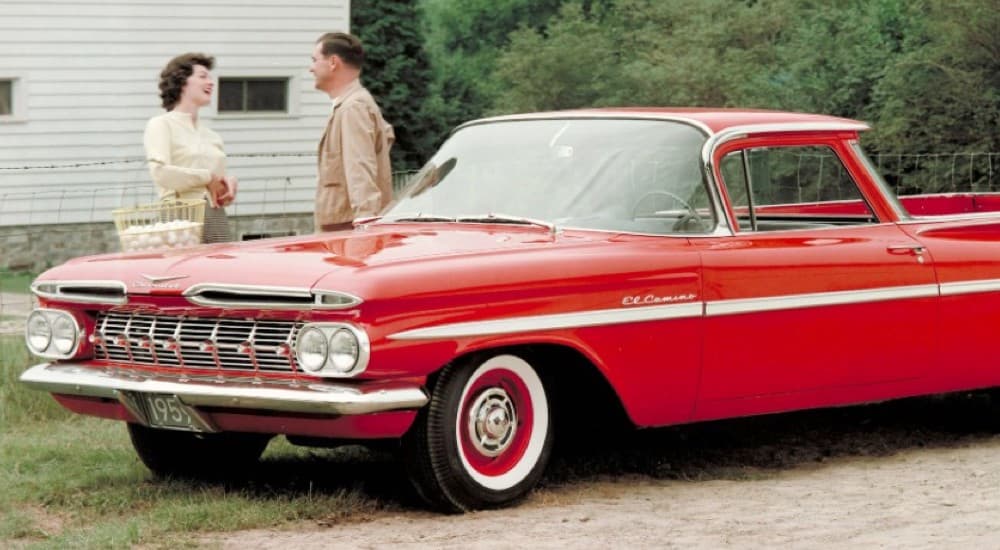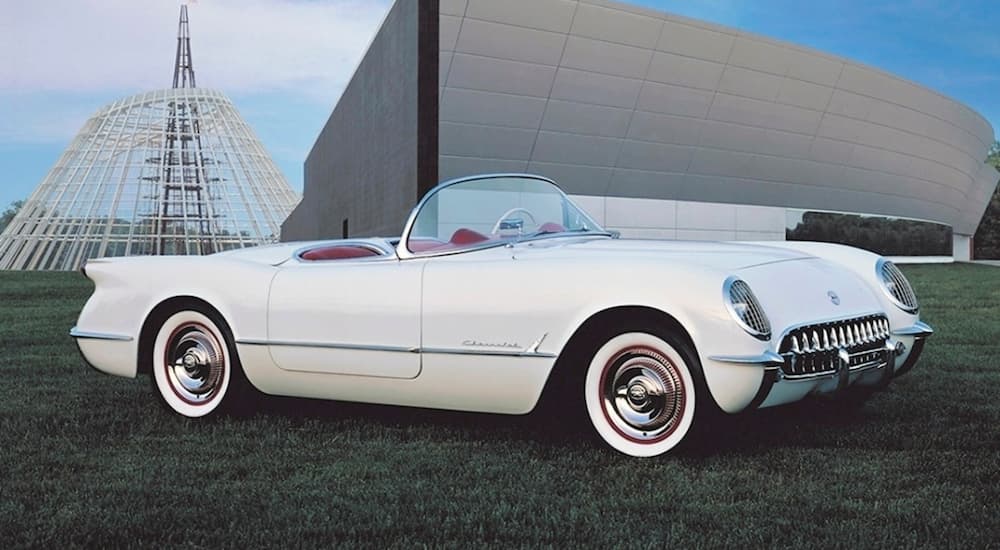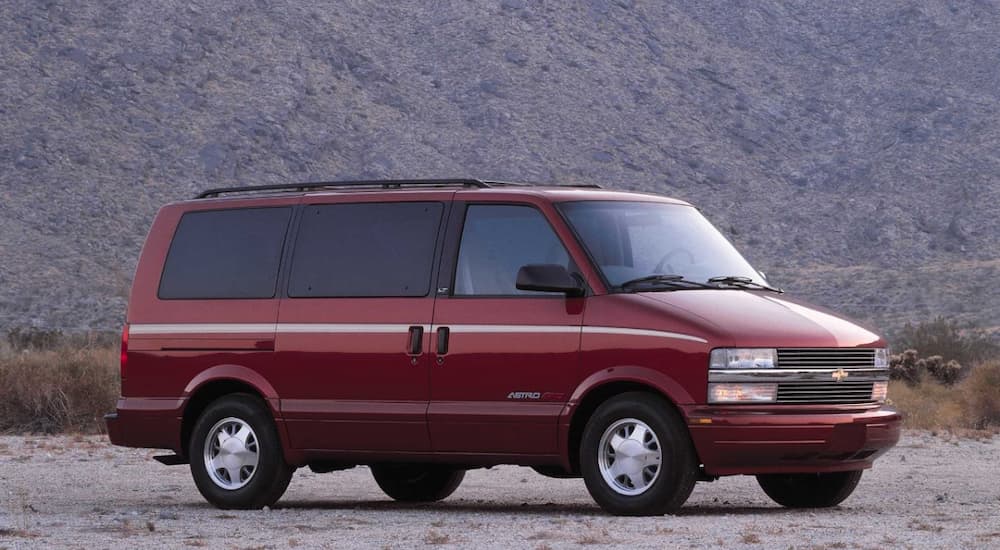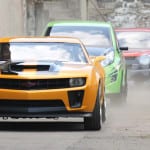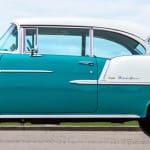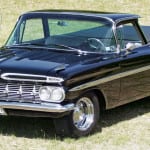The 80s were something of a transitional period for the car industry. Tightening emissions regulations paired with rising gas prices shifted interest away from gas-guzzling powerhouses in favor of smaller vehicles that were easier on fuel. This led to a pivot on a grand scale by American car manufacturers, particularly Chevy. A used Chevy dealer in the 80s, for example, would feature quite the assortment of cars, representing both the success of Chevy’s past and the driver-conscious promise of their future.
The company known for its beefy cars with big block V8s suddenly faced a fuel-conscious market in the 80s. Several classic models survived the shift, but even more new ones were brought into production. The cars made by Chevy in the 80s were a hodgepodge of preexisting vehicles like the Camaro, Corvette, El Camino, and Chevette—as well as newcomers like the S-10 Blazer, Astro Van, and Cavalier. Here are some of the notable starts of this decade.
Chevy Camaro
The Camaro is one of Chevy’s fondest models, debuting for the 1967 model year. It was during its third generation, which ran throughout the 80s, that the pony car really started to hit its stride. It shed about 500 lbs and gained fresh, geometric styling that was very on-trend at the time. It was also the first generation of Camaro to have fuel-injected engines, one of the biggest game-changers in car tech.
The year 1985 saw the release of the Camaro IROC-Z, whose 5.0-L V8 could flex out 215 hp for a 0-60 mph time of 6.9 seconds. It has a muscular body to match, complete with a lowered profile, 18” wheels, and graphics that look like they were pulled straight out of a Sega SG-1000.
Chevy Corvette
Since 1953, the Corvette has been manufactured with no hiatus, making it one of the more seasoned nameplates on the market today. The fourth-generation (C4) was the primary ‘vette of the 80s and featured several upgrades from the prior generation, like a mightier engine and the inclusion of lightweight aluminum parts. Several greatest hits can be attributed to this decade, such as the 235 hp 1986 Chevy Corvette Indy Pace Car, whose sunny coloring pairs agreeably with its convertible body style. There was also the 35th Anniversary Edition Corvette of 1988, which has all the zoomy features the C4 ushered in—plus a swanky, alabaster color scheme that extends to the body color, rims, leather seats, and leather-wrapped steering wheel.
Chevy El Camino
Chevy’s El Camino falls into the bizarre category that is the coupe utility vehicle, which is basically a mashup of a coupe and pickup truck. Several manufacturers tried the coupe utility vehicle on for size—most of the results being monstrous.
The El Camino is an exception to this rule. The fifth generation that ran through the 80s continued the El Camino’s legacy of rugged handsomeness and decent capability, although it was a slight step down from the previous generation due to steps taken to make the vehicle more efficient. It lost some length while the wheelbase grew, and a V6 became the standard option instead of V8. The El Camino would go on to take a forever drive into the sunset in 1987, but the legend lives on in our Dr. Frankenstein hearts.
Chevy Chevette
The oil crises in the 70s contributed to an influx of new cars in the compact and subcompact sections, and Chevy was quick—perhaps a little too quick—to jump on the bandwagon. The hilariously-named Chevy Chevette (why didn’t Ford ever make a Ford Fordette? Or a Ford Fordy?) was released for the 1976 model year, and quickly garnered a reputation for being pretty “meh”—up until it got the axe in 1986.
Its small engine is good for something in the ballpark of 50 hp and its catchpenny design verges on homeliness. If nothing else, it was a learning experience for Chevy, which was just starting to dip its toes in the small car pool.
Chevy S-10 Blazer
The so-called baby Blazer was born out of the 1979 Oil Crisis, which contributed to a drop in sales of the brawnier K5 Blazer. While the K5 Blazer was based on Chevy’s full-sized C/K pickup chassis, the new, lean Blazer shared a platform with the S-10, Chevy’s compact pickup that debuted in the early 80s. Like its big sibling, the S-10 Blazer was sold in a 2-door body style (until 1990, when a 4-door Blazer became an option). Unlike the K5 Blazer, its roof was firmly attached, with no option to go top-off for an open-air experience. The S-10 Blazer may have essentially been a watered-down version of the original, but it served its purpose in the 80s: increasing options for consumers who were struggling at the pump.
Chevy Astro Van
The first minivans were just starting to land in families’ hands in the 80s, and Chevy was quick to put out its own contender, kind of. The Astro Van offered a slightly bigger alternative to the minivan, built on a pickup truck chassis that allowed it to tow over 5,000 lbs. Its versatility set the Astro Van apart from the competition.
Not only was it a family vehicle with 8 seats that could fold into several different configurations, but it could also serve as a fairly capable cargo van. The seats were removable to make a very spacious 189.9 cu.ft. of cargo space, and its payload capacity maxed out at 1700 lbs. The standard engine was a 2.5-L inline-4; a 145 hp 4.3-L V6 was available for the power-hungry suburbanites (we all know one).
Chevy Cavalier
While some of Chevy’s early attempts at the small car were duds, the Cavalier managed to do pretty well. It debuted in 1982, and by 1984 was the best-selling car in the United States. It took the same title home the following year, as well. During its first model year, the Cavalier was sold in a coupe, sedan, hatchback, or wagon body style, adding on a convertible body style in 1983.
That same year, the base engine was swapped to a 2.0-L direct-injected inline-4, an upgrade from the 1.8-L carbureted inline-4 that was the previous option. It was one of Chevy’s first front-wheel drive (FWD) offerings, utilizing GM’s J platform—which was shared by other inexpensive FWD compact cars across several of GM’s brands, like Pontiac and Oldsmobile.
The Icon Giant
Chevy has been around for more than 100 years, navigating a market that shifts with breakneck speed. Adaptability is a key part of any business’s success, and Chevy has managed to change with the times while creating a consistent brand that can be traced back through generation after generation of vehicles. Each decade brings new icons from Chevy, and the Camaro, Corvette, El Camino, Chevette, S-10 Blazer, Astro Van, and Cavalier make up just a small percentage of that list.
Throughout the years, Chevy has continued to diversify its offerings, adding more passenger cars, trucks, hybrids, crossovers, and SUVs to its lineup. Quick on the pickup, they’ve also committed to doing their part to build a fully electric future. What that will look like is a mystery, but one thing’s for certain: there are new icons on the way.
